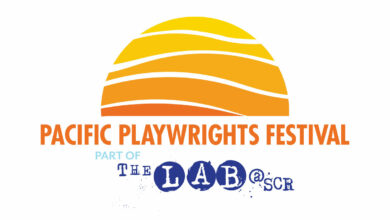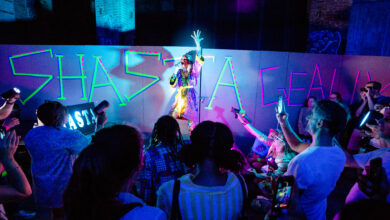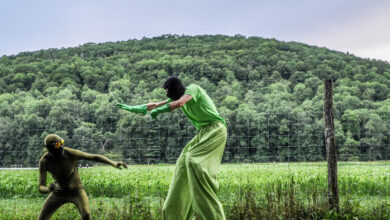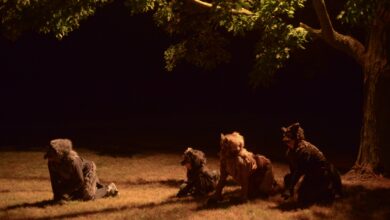Curating Openings in the Theatre of María Irene Fornés
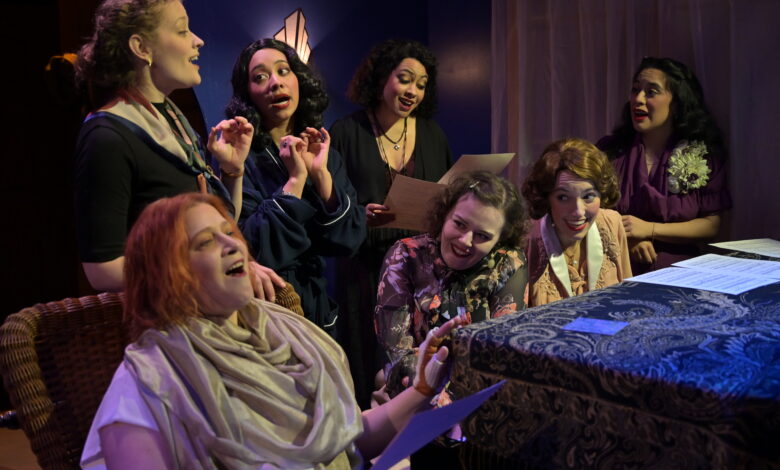
Anna: Thank you for clearing that up—that was a big point of uncertainty for both myself and the actors, and solidifying the identity of the Judges was pivotal. We should probably get onto the glossary, or you’ll be sitting here all day while I list research at you.
Juliana: When you asked me what the glossary should look like, I sent you a “radical” example. Michelle Huynh, an amazing dramaturg at UCSD, had created a glossary like I’d never seen before. In addition to specific key words from the text, she named themes that we had discussed with the playwright, poetry, and questions to chew on. So, tell me about your glossary.
Anna: One factor that made the glossary so large was the desire to have a plethora of quite specific words to choose from. We needed more than friendship; we needed companionship, abandonment, love, trust, etc. to choose from as there were constantly different sensations entering and exiting! Inspired by Huynh’s glossary, ours featured artworks, poems, stories, reflections, and questions…beacons for each actor’s individual process of discovery.
Juliana: For example, I was really interested in uncovering more context surrounding Voltairine de Cleyre. She is mentioned by name in the play. You had sourced speeches from her work as a radical advocate for women and immigrant’s political rights. As I went down my own de Cleyre rabbit hole, I learned of her debilitating migraines, as well as a traumatic assassination attempt on her life. These were additions that I wanted to highlight for everyone, especially the actor playing Julia.
Anna: We found ourselves co-navigating an ever-weaving tapestry of feelings, ideas, and identities throughout the play. When we went to organize the research into a Google document glossary, we decided to form six groups, separated in two categories. Each group was a part of either the “Seen” or the “Unseen” category. This binary helped us categorize ideas that characters may or may not be aware of.
Juliana: This split in the glossary was helpful to underline the juxtaposition in the play for the actors. The Judges may be unseen to most but their actions have real impact on the women. The audience watches Julia hallucinate. They do not see what she sees, but it’s clearly very real to her. They have to believe that what she is seeing is, in fact, what is happening. Her perception has to supersede ours in that moment.
Anna: Yes! The groups (which correlated to parts of the body: heart, brain, etc.) outlined the physical and non-physical truths of our characters. Some of these women are in serious life transitions, some are ex-lovers, some have gone through painful and treacherous experiences that their friends may not know about.
Juliana: It was a place where we could navigate the surrealness that was happening in the play. One of the central images that I had was a photograph created by Cuban sculptor Ana Mendieta, from her Silueta series. In the image, we see the artist laying naked in a void in the ground. Her body is covered in small blooming flower cuttings. There was something about this image—a cycle of death, resurrection, suffering, pain, absolution, purification—that felt like what the women were moving through.
Anna: I’m so glad you brought up Mendieta and her siluetas, whose work, as vast and conflicting as it is, manifests as a naked imprint of her body in the earth. While it can seem very overwhelming as a concept, it’s what we do as human beings: we bring the unseen into the forefront of our mind, and we come to self-awareness. We are all on our own journey toward self-understanding on both a physical and a celestial level, and it’s centered through the physical bodies we inhabit. Sorry, I’m going way out there again!
Juliana: I live for your run on sentences! So, how did we incorporate the glossary during tablework?
It was really special to be investigating women’s histories as a group of women.
Anna: We had a massive monitor in the space projecting our glossary (which was an ever-evolving digital document). While you and the actors ventured into the text, I followed along with the glossary posing questions, sharing ideas, and providing images to help us dissect the work more critically.
Juliana: It was really special to be investigating women’s histories as a group of women. Our stage management team, assistant director, yourself, and the cast were all women. Can you talk a little bit about the poetry packet? It was such a tender way to share your own heart with the cast. And modeled the vulnerability I was trying to set up in the room.
Anna: You shared early on that you love to engage in poetry with your actors, so I went out on a search for poems that might help us tell this story. I fell in love with the works of a collection of women poets (Georgia Douglas Johnson, Emily Dickinson, and Angelina Weld Grimké to name a few), whose artistry I cherished even more as I researched their lives (just as Irene did with her love of nostalgia). These are women who lived anywhere from the 1850s to the 1950s, and as we read their work, it was like you could see our characters. You could see Julia through these poems. You could see Fefu through these poems.

